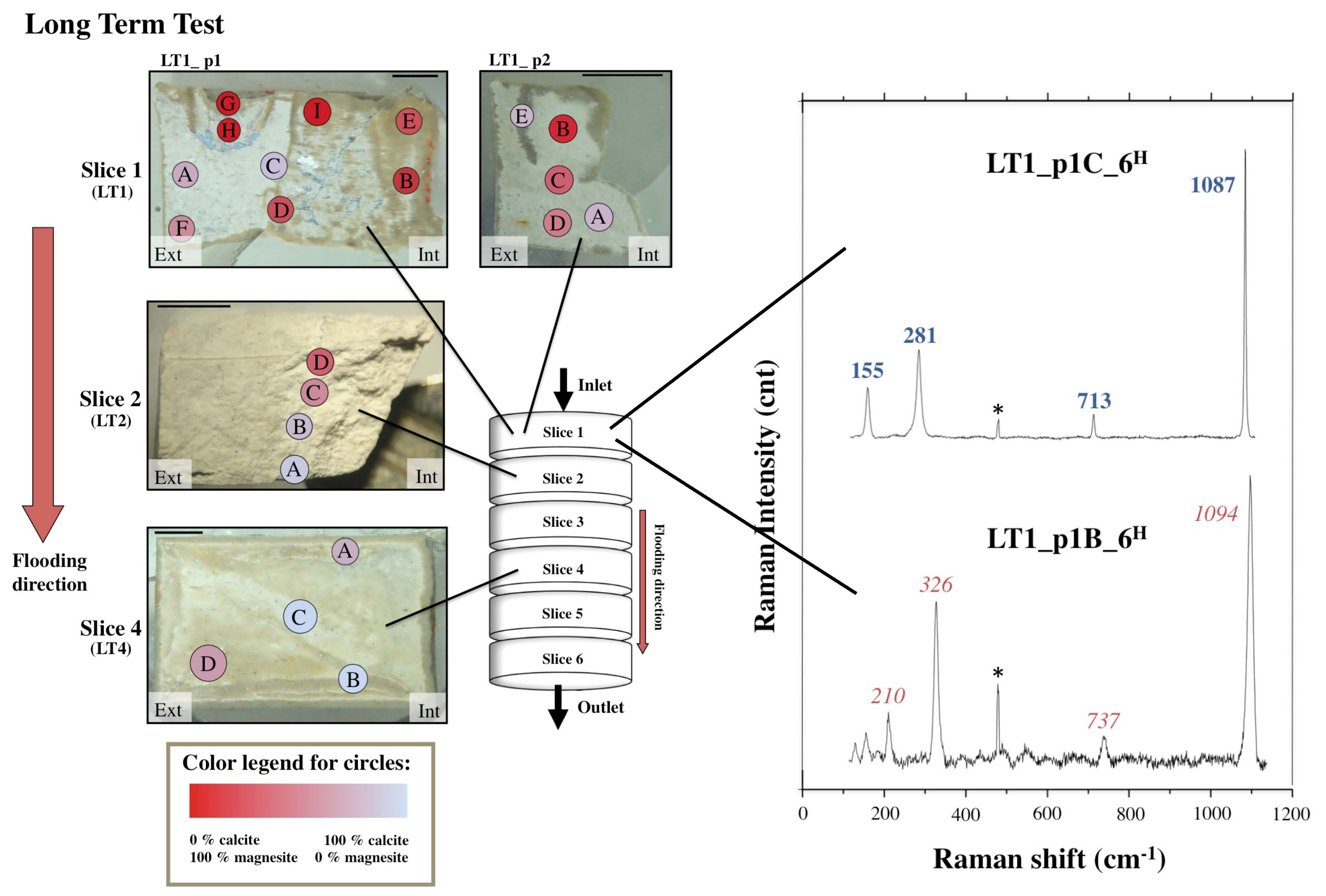Understanding the chalk-fluid interactions and the associated mineralogical and mechanical alteration at sub-micron scale are major goals in Enhanced Oil Recovery. Mechanical strength, porosity, and permeability of chalk are linked to mineral dissolution that occurs during brine injections, and affect the reservoir potential. This paper presents a novel "single grain" methodology to recognize the varieties of carbonates in rocks and loose sediments: Raman spectroscopy is a non-destructive, quick, and user-friendly technique representing a powerful tool to identify minerals down to 1 µm. An innovative working technique for oil exploration is proposed, as the mineralogy of micron-sized crystals grown in two flooded chalk samples (Liége, Belgium) was successfully investigated by Raman spectroscopy. The drilled chalk cores were flooded with MgCl2 for c. 1.5 (Long Term Test) and 3 years (Ultra Long Term Test) under North Sea reservoir conditions (Long Term Test: 130°C, 1 PV/day, 9.3 MPa effective stress; Ultra Long Term Test: 130°C, varying between 1-3 PV/day, 10.4 MPa effective stress). Raman spectroscopy was able to identify the presence of recrystallized magnesite along the core of the Long Term Test up to 4 cm from the injection surface, down to the crystal size of 1-2 µm. In the Ultra Long Term Test core the growth of MgCO3 affected nearly the entire core (7 cm). In both samples, no dolomite or high-magnesium calcite secondary growth could be detected when analysing 557 and 90 Raman spectra on the Long and Ultra Long Term Test, respectively. This study can offer Raman spectroscopy as a breakthrough tool in petroleum exploration of unconventional reservoirs, due to its quickness, spatial resolution, and non-destructive acquisition of data. These characteristics would encourage its use coupled with electron microscopes and energy dispersive systems or even electron microprobe studies.

